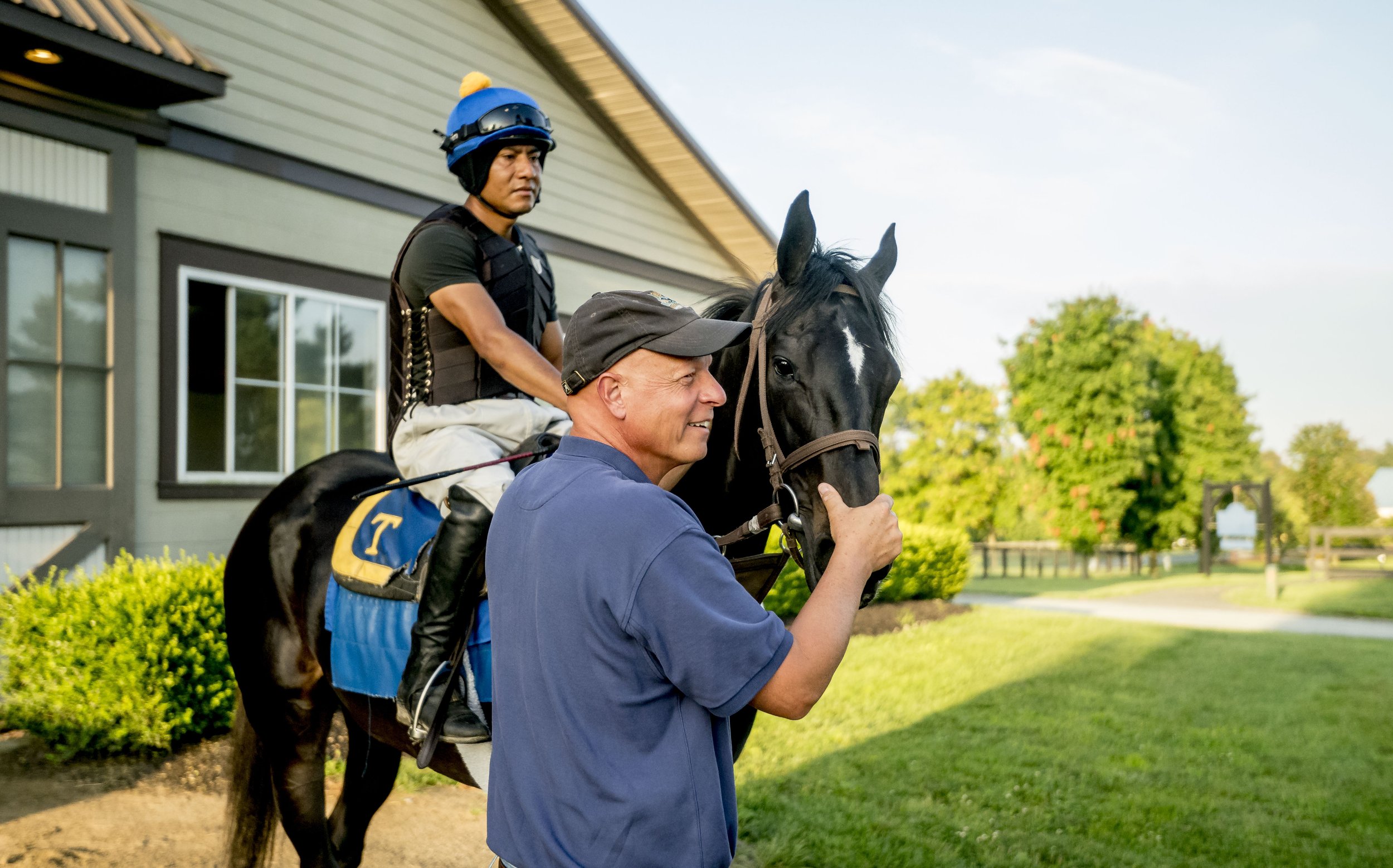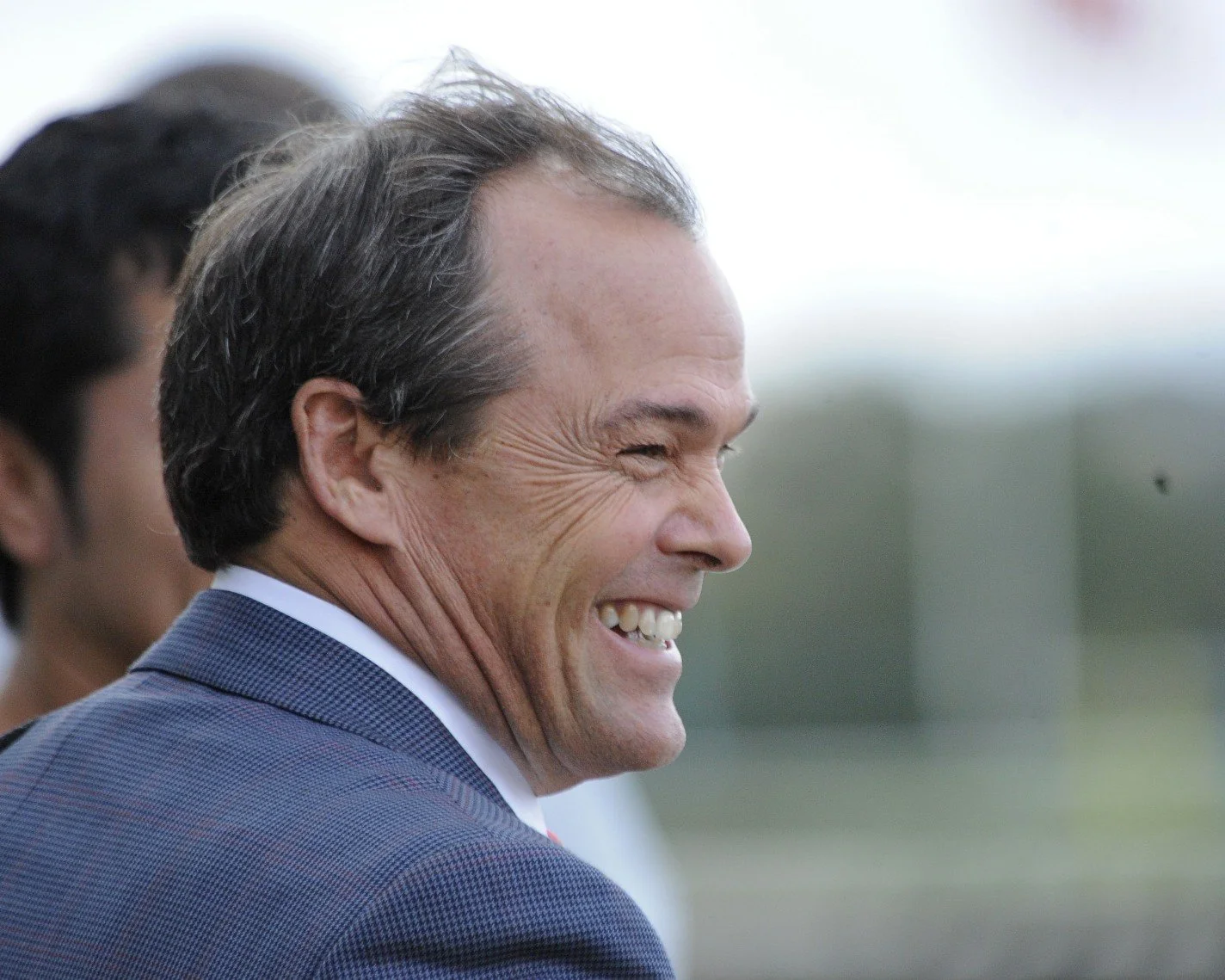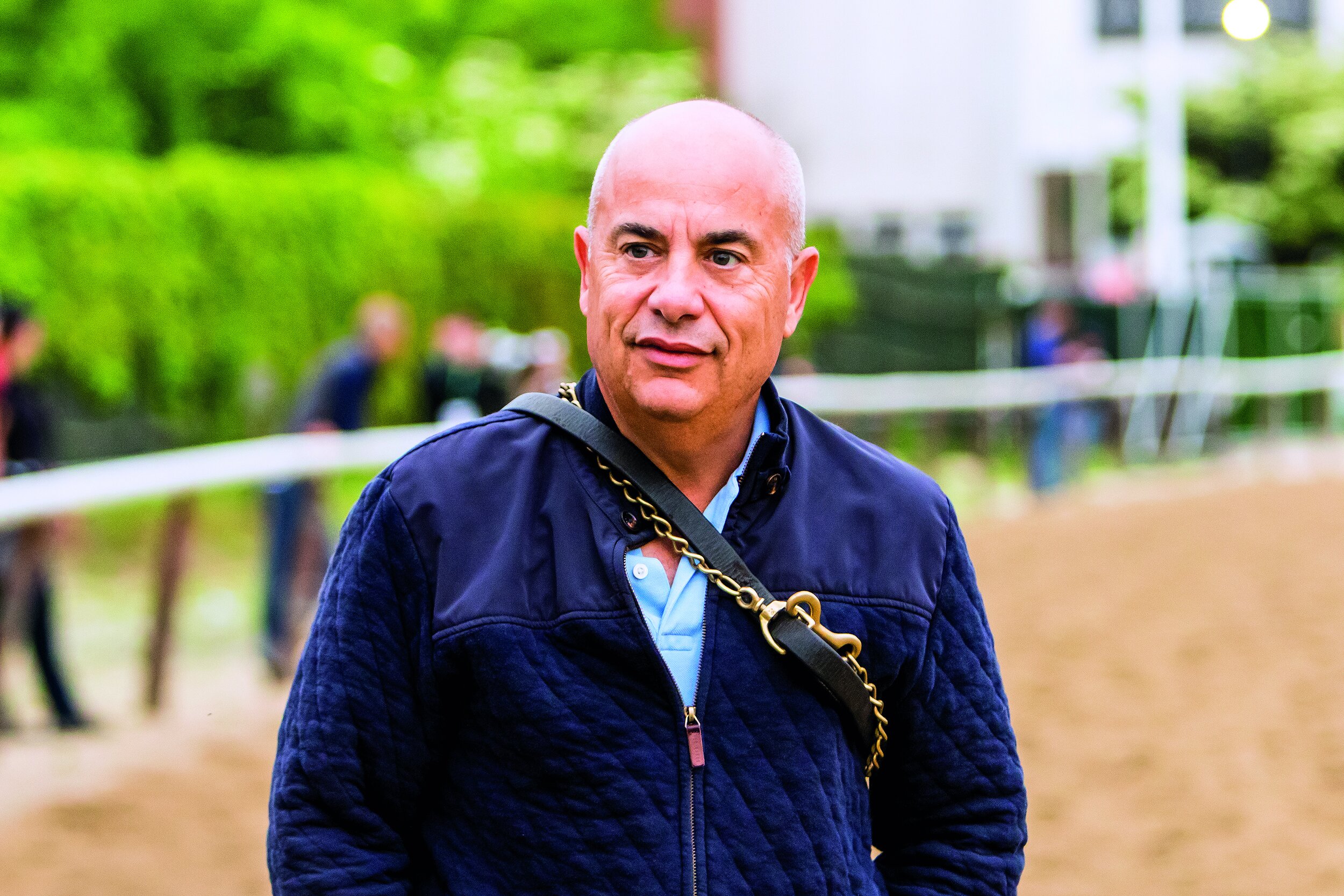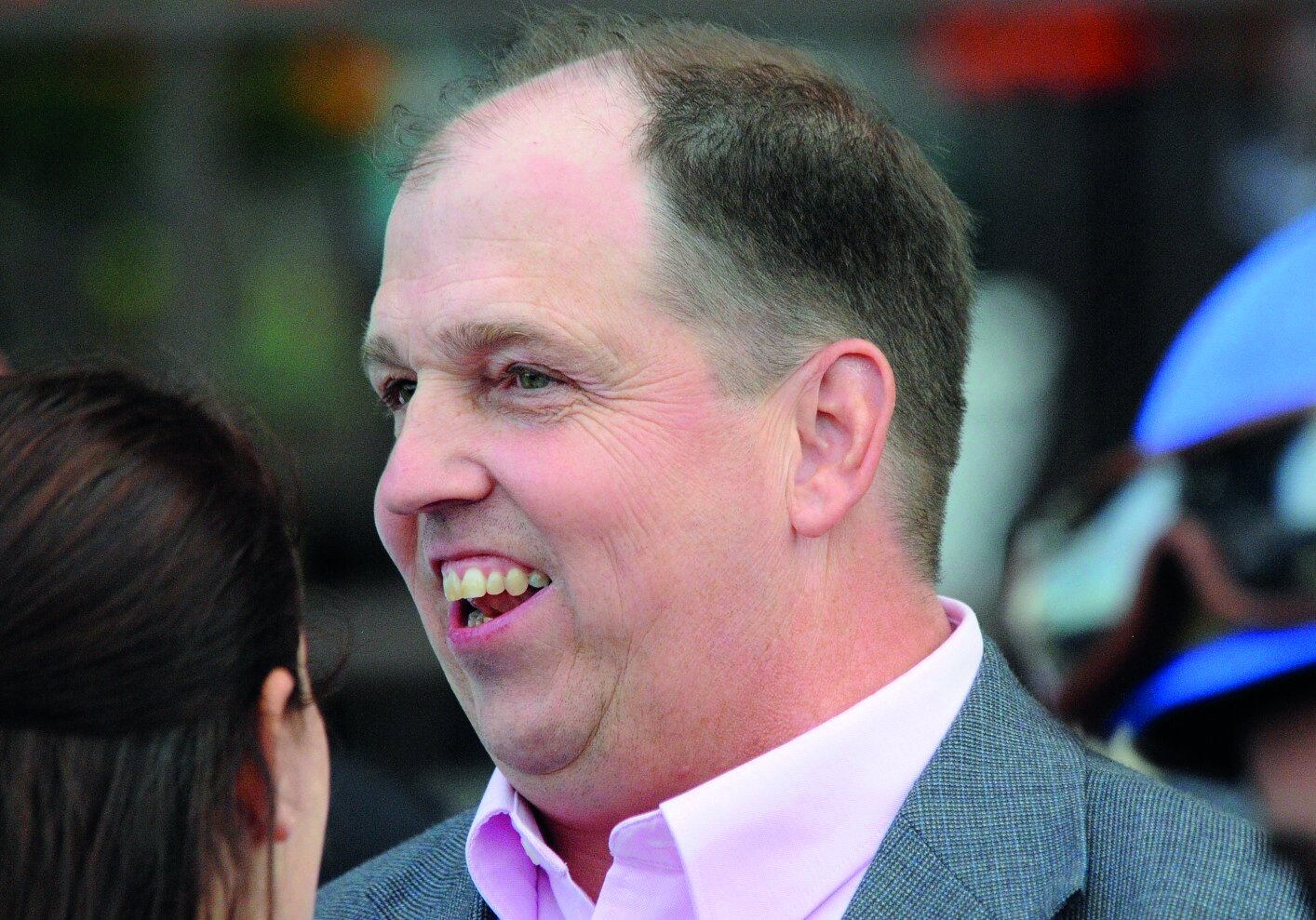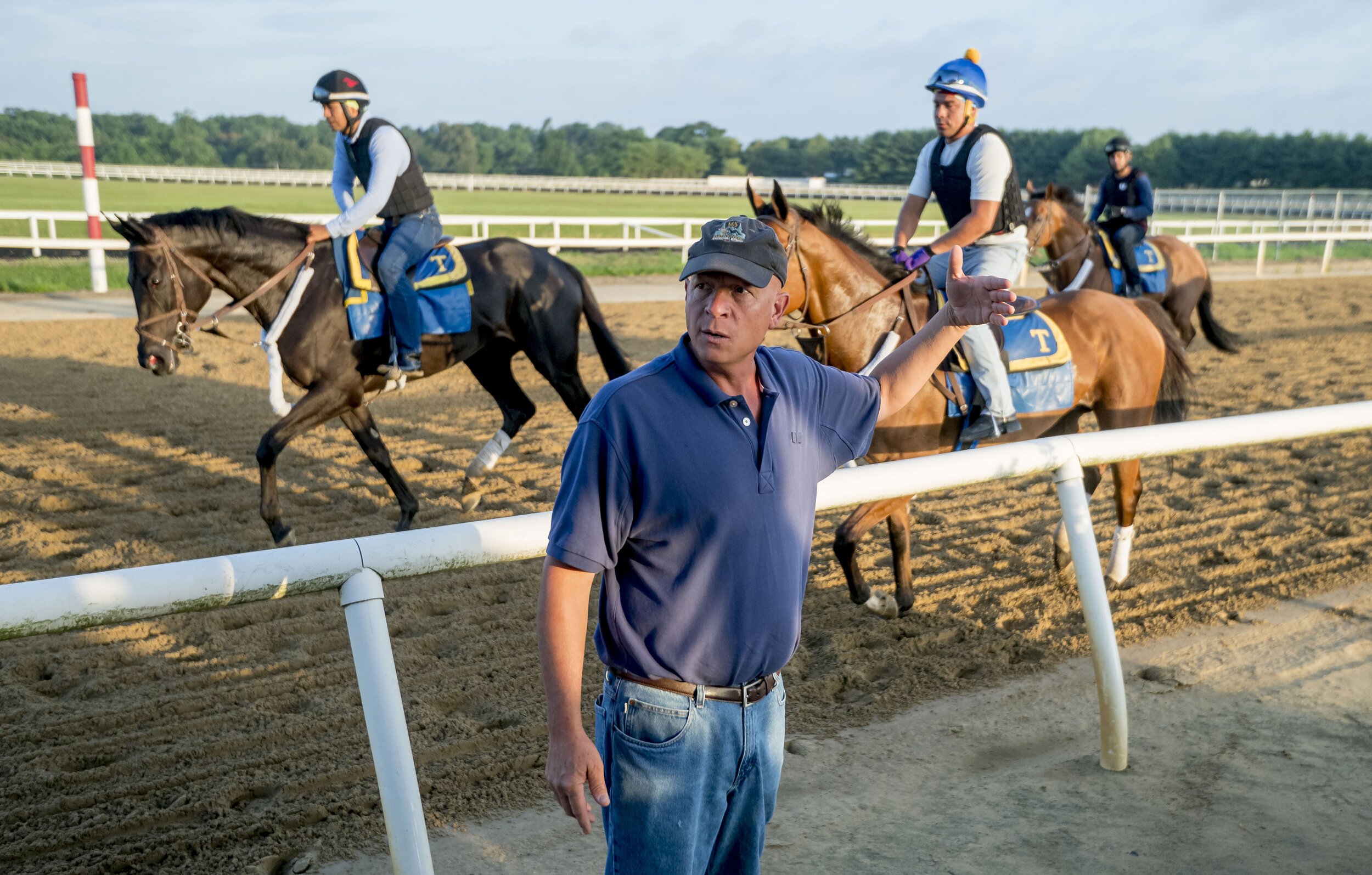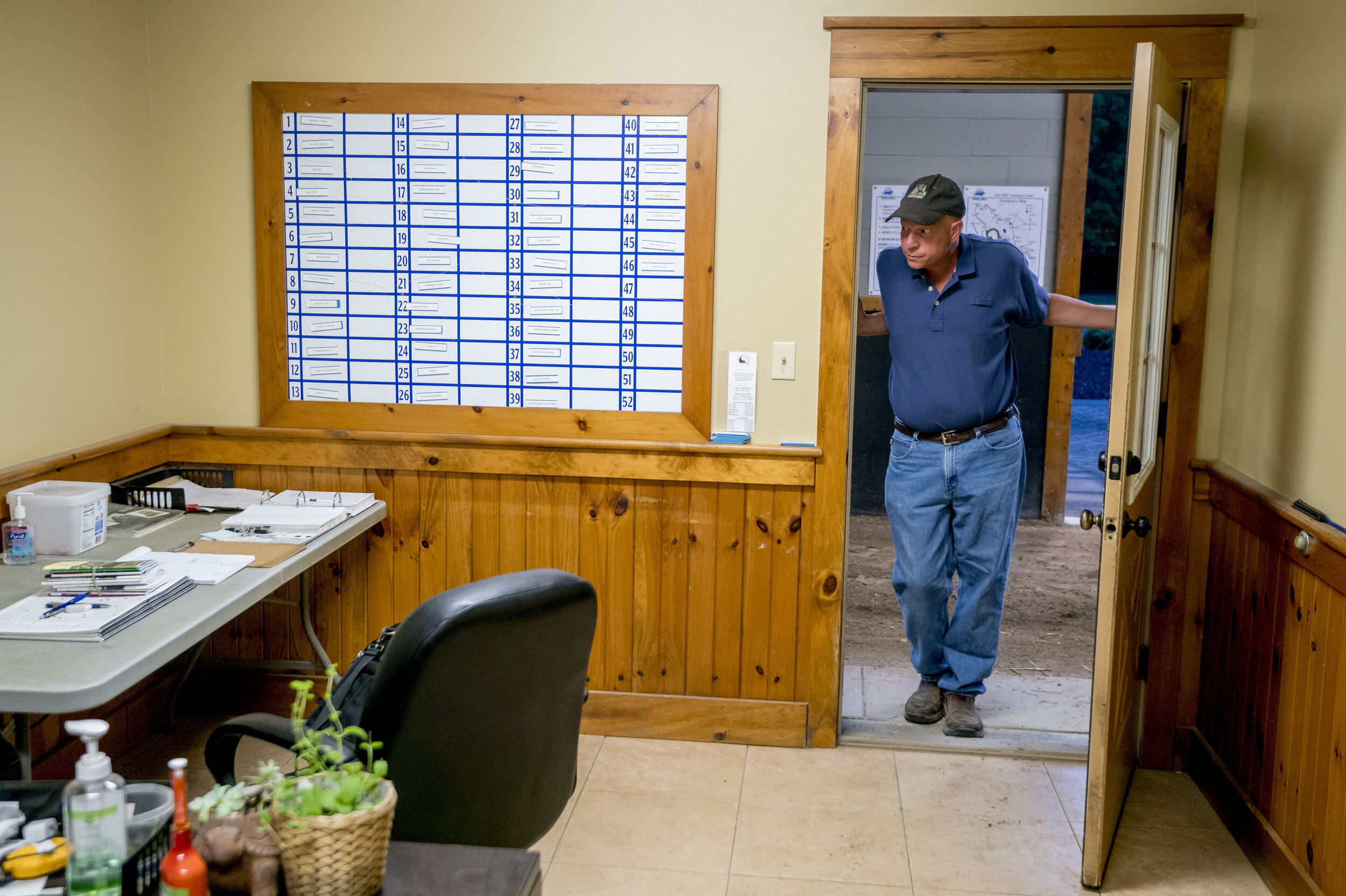#Soundbites - how can trainers improve racing's public perception / image?
Article by Bill Heller
Bruce Levine
Can you ask an easier question? The only thing I can say is, if more people came out in the morning to see a horse train, you’d get a better handle and feel on how fragile the horses are. When you run horses, injuries are going to happen. You watch football players, they don’t put them down, but they cart them off. Horses’ ankles are so much smaller. It’s a fact of life.
D. Wayne Lukas
I think that they should probably interact more with the general betting public and the fan base, and let the general betting public and fanbase know there are some real sound people training. Let them get to know personalities.
Richard Mandella
I would say that you have to deal with the public when you have a chance to, to explain what we do. Be as open as possible so we don’t keep training a secret, so that the public can appreciate what we do. It’s a very important question because we need to do everything we can to gain respect for the sport that we seem to be losing.
Mark Hennig
Do things the right way would be one thing. I think there’s a lot of negativity, especially in social media, but there are positives, too. Trainers can explain what goes on every day. We have so much love and care and admiration that goes into these horses. I don’t know if we do a good job getting that message out.
Mike Stidham
I think the most important thing is every trainer taking responsibility for his job to do the very best they can to keep the horses safe and healthy. Always do the right thing. Keep the horse first. Make the horse the priority. Because I think when you’re out in the public with people who don't know racing, they worry about horses dying. They see horses die. As trainers we don’t have total control over that, but we can make a difference by doing the right thing for the horses, giving them the benefit of the doubt. To me, that’s the most important thing.
Mike Trombetta
You know, obviously that’s a good question. I think the answer to that is of all the things that happen in racing, the good majority are upbeat stories. In our world, too much emphasis is on the negative. Just watch the news. It’s horrible to watch. If something bad happens, you hear about it five minutes later. With racing, there’s a million good stories we never hear about. It’s not talked about quite enough. Perception is reality.
Tim Hills
Be more accessible to the people at the races and the media. We’re always full disclosure. We’re not hiding anything. We love what we do and we want to share it with anyone who wants to know.
#Soundbites - What would you do if you weren’t training Thoroughbreds?
By Bill Heller
Mike Trombetta
Mike Trombetta
That’s a heck of a good question. I’ve been doing this so long, I couldn’t tell you. I really don’t know. Construction and demolition, that would be an option. I did that for 15-20 years, but I was doing this at the same time, too. I like this a heck of a lot more.
John Kimmel
John Kimmel
There are two things besides horses I love: snow skiing and deep sea fishing. I’m in Utah, skiing right now. I’m not that far from retirement. I’ve been doing this for 40 plus years. When things tail off, if my business slows down, that’s what I would be doing.
Mark Casse
Mark Casse
I’ve thought about that many times. Probably real estate. I just think it’s a challenge, and the rewards are great. That’s what I would probably do.
Jeremiah Englehart
Jeremiah Englehart
Oh, wow! I’m not sure. I’ve been doing horses since I was so young; I always wanted to be a trainer. I guess I would like to do something with football. I’ve always had a passion for football, maybe coaching or working with kids. I’ve always been a fan in sports. I played sports in high school. That’s something I would like to do.
Craig Dollase
Craig Dollase
I’ve always wanted to pursue sports. I’m a big sports advocate. I’d go for something in the sports world, not physical—something to help people in the sports world. I have a cousin who was actually the trainer for the San Francisco 49ers. I had an in. I could have gone in that direction. But I went to work for my dad, and now I’m a trainer. It turned out pretty good.
Tony Dutrow
Tony Dutrow
You know, at 64, I’m so much still in love with horses and horse racing. There will never be anything else for me. But if I would have never done horse racing, I’d try my hand at real estate. Because that’s a challenge.
David Donk
David Donk
A good question. Later in life, what interests me is management—racing management. But I’m lucky to be doing something now I love.
Mike Trombetta - from demolishing buildings to constructing a racing stable with firm foundations
By Bill Heller
For the first 15 years of his 31-year training career, 55-year-old Mike Trombetta split every day between the racetrack and his brother Dino’s demolition company in White Marsh, Maryland. “He would train horses in the morning and knock down buildings in the afternoon,” his long-time friend and client R. Larry Johnson laughed. Dino added, “Then he’d go back to the track in the evenings just to check on things.”
Of course he did. That’s what he, Dino and their sister Laura learned from their parents. “Our dad worked extremely hard,” Dino said. “Both him and my mom were hard workers. That’s how we grew up. We worked hard in everything we did. That’s what it took to have success.”
Mike could still be working two jobs had he not had the good fortune to take over the training of a horse who had previously made just one start, finishing 12th by 24 lengths as a two-year-old in 2005. That horse, Sweetnorthernsaint, would go off the favorite in the 2006 Kentucky Derby, making a strong middle move under Kent Desormeaux before tiring to finish seventh. Sweetnorthernsaint then finished second in the Preakness Stakes. “That gave us national exposure,” Trombetta said. “That gave us a big push for sure.”
The following year, Trombetta’s starts increased from 312 to 422, his victories from 78 to 106 and his earnings from $2.7 million to $3.5 million. Trombetta abandoned his demolition career and began upward trending with his training. In 2019, he posted a career high in earnings—$4,614,509—helped by his three-year-old Win Win Win, who was ninth in the Kentucky Derby, and his two-year-old Independence Hall, who became a legitimate contender for the 2020 Kentucky Derby. Independence Hall ran into problems in 2020, but Trombetta still finished 24th in earnings with more than $4.1 million and a win percentage of 16.0. Trombetta has posted a win percentage of 20 or higher for an entire year 11 times.
But the past several months have been a bit rough. Through early June, he ranked 36th in the country in earnings with nearly $1.6 million. Yet he still is winning at a 16.4 percent rate. “We’re not doing that well,” he said on June 14.
“This year, it’s been an adjustment year coming off the COVID. We were hoping at the beginning of this year things would go back to normal. Then Woodbine got delayed. It got a little weird here. We had a herpes situation in Maryland. For several months, they wouldn’t let horses come in or leave. That was a bizarre situation. Then, at Laurel, they had to redo the track. We’re still not back to normal. It seems like something has been going on—something new to deal with. It’s hard for all of us.”
He feels the same way on the thorny issues of medication and whips. “I’m probably like a lot of other trainers,” he said. “What we’d like to have more than anything is a clear understanding of the dos and don’ts, especially in the Mid-Atlantic states. We just want to know what the rules are and how to play the game. When you turn on a football game, they all have fields of 100 yards and 15 minutes in a quarter. Horse racing is anything but that. It’s different in every state.”
That is about to change next summer when the Horse Racing Integrity Act comes to life. Will uniform rules become the norm? “We can hope,” Trombetta said. “Time will tell. It would be great just to get everybody knowing what the game looks like. Now, in every jurisdiction, there’s something different. We want to stay out of harm’s way. This Lasix thing is a great example. Two-year-olds can use it in one state, but not in another. I just hope the powers [that] be get something that works for the whole industry so that we can follow and understand. It’s the same thing with this whip rule. It’s different in other states. One state allows four times, one state says six; and in one state, they can’t use them at all. We’re getting further away from uniformity. Guys like us that are in this region race throughout the country for the most part. When you go through the stable gate somewhere else, it’s a different rule.”
Can the Horse Racing Integrity Act end that problem permanently? “In a perfect world, yes,” Trombetta said. “I don’t know if they’re capable of doing it.”
This summer, Trombetta’s horses—now between 80 to 90—are stabled at Far Hill, Timonium temporarily until Laurel’s renovations are complete and in
Delaware. His horses also race in Florida in the winter and in New York in the summer when they belong. His winter stable usually numbers 60 to 70 horses.
“We try to take the right horses to the right place,” Trombetta said. “We work off the condition books. There are little differences in each track. Obviously, when you go to New York, you have to know your horse is capable of competing in New York. We don’t get it right all the time, but we try. Surfaces come into play: dirt, synthetic, turf. You have to figure in all of the factors. I carry six, seven condition books with me.”
Is it like being back in school? “It can be at times, because it’s constantly changing,” Trombetta said. “I’m checking those things at 6 or 7 at night to make sure I can stay on top of it—make sure I’m not missing anything.”
CLICK HERE to return to issue contents or sign up below to read this article in full
TRM Trainer of the Quarter - Mike Trombetta
The 47 year old native of Baltimore, Maryland couldn't have got off to a more successful 2014 with Bold Curlin winning the Native Dancer and Extrasexyhippzster the Miracle Wood at Laurel Park.
CLICK ON IMAGE TO READ ARTICLE
THIS ARTICLE FIRST APPEARED IN - NORTH AMERICAN TRAINER - ISSUE 3






